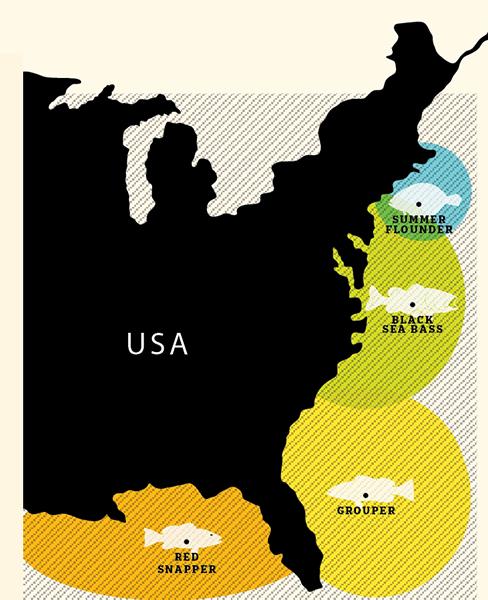
lme
What the heck is an LME? My apologies — I have been working in fisheries management too long, and like many others, I too often tend to talk in acronyms. LME is governmentese for large marine ecosystems. I think that our government is one of the greatest fabricators and utilizers of acronyms.
In past columns, I have discussed the need for fisheries management — as well as how governments manage other natural resources — to move toward ecosystem-based management rather than a species-by-species basis or individual-project basis. First, most of the man-made boundaries are artificial. Fish do not pay attention to state lines. They do not know the difference between state, federal and international waters. In most cases, they react to the natural boundaries of large marine ecosystems and all the pieces that make that area functional.
Change-Up
Marine scientists, both governmental and academic, have been pushing management toward ecosystem-based fishery management (EBFM) for a number of years. I have attended quite a few meetings on this subject and usually come away nodding my head in complete agreement with the concept. However, I continue to believe that getting from single-species management to EBFM is a huge change in operations and mindset. I have wavered on how to best make the change. Some days I think incremental change will do it best. Then I think incremental changes in a meaningful time frame will be impossible. So I jump off the merry-go-round the next day and start with a new system. What has recently happened at the Atlantic States Marine Fisheries Commission (ASMFC) might set the stage to move incrementally and, if it works, then go forward with more-drastic steps.
Moot Splits
As the fishing season gets underway for the now-called Greater Atlantic Region, some of the most important species are managed on a regional basis. The idea for this management scheme was spawned in the mid-Atlantic due to the inconsistency of state landing limits, primarily for summer flounder, or fluke. Those fishing in New Jersey had one set of bag and size limits, and those fishing in New York had another. Yet they could be fishing within sight of each other, and fishing on the same stock of fish. Part of the reason for this was the carry-over of the baseline for the original allocation of these fish to each state, and then each state’s implementation of management measures. The conditions that determined those allocations have changed, yet the management regime has not. So at its winter meeting, the ASMFC made changes to its Summer Flounder and Black Sea Bass Fishery Management Plan that established regional recreational management for both species for the 2014 fishing year. For summer flounder, the regulatory change creates management measures by region aimed at providing more equity in recreational-harvest along the coast, especially between New York and New Jersey. The approved summer flounder regions are Massachusetts and Rhode Island, Connecticut through New Jersey, Delaware through Virginia, and North Carolina.
Lumping
For black sea bass, the ASMFC also approved continuation of management measures by Northern (Massachusetts through New Jersey) and Southern regions (Delaware through North Carolina). The ASMFC worked with the states to develop regional measures to collectively achieve, but not exceed, the recreational-harvest limit. The adaptive regional approach is approved for one fishing year only. If this succeeds, it should be the beginning of looking at management on a more regional basis. While this could be a step toward EBFM, it will be only a step, and many more have to follow.
At the Managing Our Nations Fisheries Conference in Washington, D.C., a year ago, I spoke on the need to change the Magnuson-Stevens Act (MSA) to accommodate more EBFM. The act is currently designed to manage on a species-by-species basis. But fish ignore the artificial boundaries recognized by the MSA. In discussions concerning how to “improve” the MSA, not many have been about EBFM. If the reauthorization is completed in this session of Congress, there might be a push to get NOAA Fisheries to look at the regulations and fix them administratively.
With or without a federal fix for EBFM, this year’s summer flounder (or fluke) and black sea bass seasons will be a test to see how regionalization works. I suspect that anglers will be happy with the results. The proof will be in the fish box.









